8 worst summer skin care mistakes you need to stop making
Get the secrets to protecting your skin from sun damage.
Updated on February 23, 2023
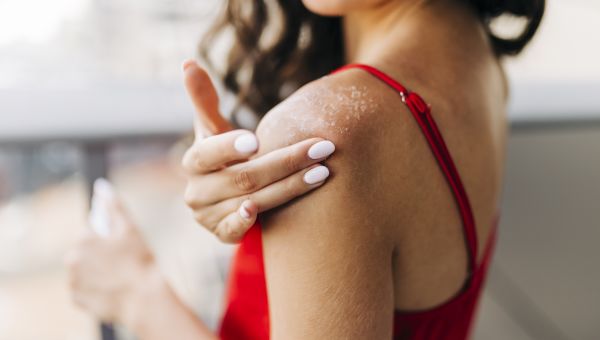
Your skin can take a beating in the summertime. Between beach trips, barbecues, and other outdoor activities, long days outdoors can exacerbate sun damage and wrinkles and raise your risk of developing skin cancer. But there are ways you can protect yourself.
Here are eight summer skin care mistakes you should avoid, plus tips for safeguarding your skin all season long.

You don’t choose the right sunscreen
You know you should apply sunscreen before heading outside, but are you choosing the right sun protection factor (SPF)? High SPFs offer only slightly better protection than those with a lower number. “Sunscreens level off after SPF 45,” says Jeanine Downie, MD, a dermatologist in Montclair, NJ.&… Show More
You know you should apply sunscreen before heading outside, but are you choosing the right sun protection factor (SPF)? High SPFs offer only slightly better protection than those with a lower number. “Sunscreens level off after SPF 45,” says Jeanine Downie, MD, a dermatologist in Montclair, NJ. A sunscreen with an SPF of 30 will block 97 percent of the sun’s harmful ultraviolet B (UVB) rays.
So protect yourself from ultraviolet radiation (both UVA and UVB rays) by applying a broad-spectrum sunscreen or sunblock with an SPF of 30 or higher.
Visible light can also be damaging to skin. The only way to protect against visible light is to put on visible sunscreen. Check the sunscreen label to see if it says “tinted.” Tinted sunscreens include a special formulation of iron oxides and pigmentary titanium dioxides in their ingredients. It won’t soak in and disappear like other sunscreens, so it may look a little pasty. The good news is there are a variety of shades of tinted sunscreens available so you can match your sun protection to your skin tone.
Show Less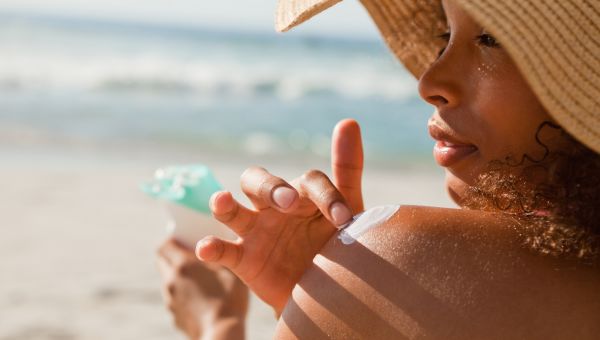
You don’t reapply your sunscreen
Don’t be fooled: a high level of SPF can trick you into believing you can stay outside longer, increasing your chances of skin damage and skin cancer. But in fact, high-SPF sunscreen lasts the same amount of time as low-SPF sunscreen.
Make sure to reapply your sunscreen around every two hours,… Show More
Don’t be fooled: a high level of SPF can trick you into believing you can stay outside longer, increasing your chances of skin damage and skin cancer. But in fact, high-SPF sunscreen lasts the same amount of time as low-SPF sunscreen.
Make sure to reapply your sunscreen around every two hours, or as indicated by the label. Reapply even on cloudy days—up to 80 percent of UV rays can pierce through clouds. Depending on your activities, you might need to reapply it more often. While some sunscreens are “water-resistant,” no sunscreen is completely waterproof or sweatproof. In fact, manufacturers of sunscreens are not allowed to use these terms. So, make sure to put on more sunscreen after swimming or sweating.
Show Less
You count on the clouds
Venturing outside when it’s overcast doesn’t mean you’re safe from the sun’s harmful rays. UVA rays—the ones associated with damaging and prematurely aging skin—reach your skin at any time of the year, even on cloudy days through rain and fog. It’s possible to get sunburned by UVB rays, too, when… Show More
Venturing outside when it’s overcast doesn’t mean you’re safe from the sun’s harmful rays. UVA rays—the ones associated with damaging and prematurely aging skin—reach your skin at any time of the year, even on cloudy days through rain and fog. It’s possible to get sunburned by UVB rays, too, when the sun isn’t shining. There’s more: UVA rays can pass right through glass windows.
The solution? Apply adequate sun protection every day. Dr. Downie recommends using SPF 30 all year, rain or shine. And don’t forget to lather on the sunscreen before you hit the road or lounge beside your bay window.
Show Less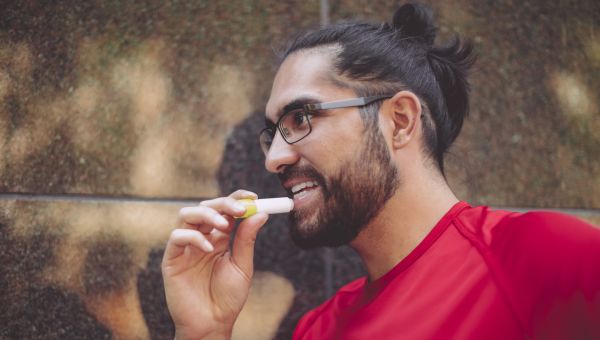
You skip the spot check
In a rush to get outdoors, it can be easy to miss a few spots when applying sunscreen. Commonly missed areas include the back of your knees, feet, hands, and ears. "These places get sunburned very easily when neglected," says Downie.
Other places to make sure you cover are your nose, the back of… Show More
In a rush to get outdoors, it can be easy to miss a few spots when applying sunscreen. Commonly missed areas include the back of your knees, feet, hands, and ears. "These places get sunburned very easily when neglected," says Downie.
Other places to make sure you cover are your nose, the back of your neck, your hands, and the tops of your feet. You head and scalp also need protection. Cover it with a hat or cap or put sunscreen on bald spots or areas where your hair is thinning.
Lips are especially vulnerable to sun damage since they have less protective melanin and the skin is thinner. A burn on the lips can raise your risk for skin cancer of the mouth. Sun exposure also damages collagen, which can thin your lips over time. To protect your lips, add broad-spectrum lip balm every two hours. Know that normal lipsticks and glosses don’t count—the sheen actually attracts damaging rays, leaving you susceptible to sunburn.

You scratch stings and bites
Bugs are as common to summer as backyard cookouts, and their bites can itch like crazy. It’s best to resist the temptation to scratch, since it may break the skin and increase your risk of infection.
There’s a solution: For stings, use a fingernail or credit card to scrape away any remaining… Show More
Bugs are as common to summer as backyard cookouts, and their bites can itch like crazy. It’s best to resist the temptation to scratch, since it may break the skin and increase your risk of infection.
There’s a solution: For stings, use a fingernail or credit card to scrape away any remaining stingers. Relieve the pain by applying a cool compress and popping an ibuprofen if needed.
Combat itching with an antihistamine cream or anti-itch lotion. Aloe vera gel can help soothe the affected area. To fight the temptation to scratch, try keeping the bite or sting covered with a bandage.
Show Less
You forget your feet
Flip-flops and sandals go well with shorts and summer dresses, but they may not be the wisest option for protecting your feet. Hanging out all day in support-free footwear can spread out the pad of your heels and crack the skin. Open-back shoes also expose the delicate skin on your feet to the air,… Show More
Flip-flops and sandals go well with shorts and summer dresses, but they may not be the wisest option for protecting your feet. Hanging out all day in support-free footwear can spread out the pad of your heels and crack the skin. Open-back shoes also expose the delicate skin on your feet to the air, which can be drying. Dry cracks can deepen and in some cases, bleed.
If you just can’t ditch your favorite summer sandals, be sure to keep your feet moisturized. After taking a bath or shower, apply a moisturizing foot cream. Before bed, put plain petroleum jelly on your feet. You may want to wear socks so your bedding doesn’t get greasy.
Show Less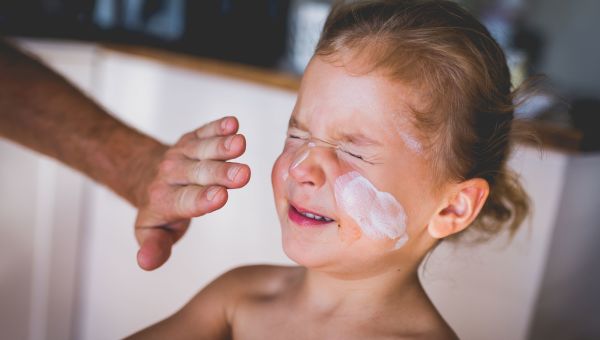
You get lax with kids’s sun protection
It can be a battle trying to apply sunscreen to squirmy little ones, but it’s certainly worth the hassle. One bad sunburn during childhood can double your child’s chances of developing melanoma as an adult.
For kids over the age of six months, try making a game of it. Let kids “paint” each other… Show More
It can be a battle trying to apply sunscreen to squirmy little ones, but it’s certainly worth the hassle. One bad sunburn during childhood can double your child’s chances of developing melanoma as an adult.
For kids over the age of six months, try making a game of it. Let kids “paint” each other with sunscreen sticks, then step in and finish the job. Another solution: Buy your kids swimwear with built-in SPF, though you'll still need to apply sunscreen to the areas the suit doesn't cover.
Be vigilant about reapplying sunscreen. Even products that claim to be water-resistant should be reapplied each time little ones get out of the water.
For infants, the FDA recommends keeping them out of the sun entirely, or at least between 10 a.m. and 2 p.m. when the sun is strongest. Use clothing to cover their skin and look for places to hang out that have natural shade. Since infant skin is sensitive, sunscreen might cause side effects, like a rash. Before applying any product to their skin, be sure to talk to your baby’s pediatrician.
Show Less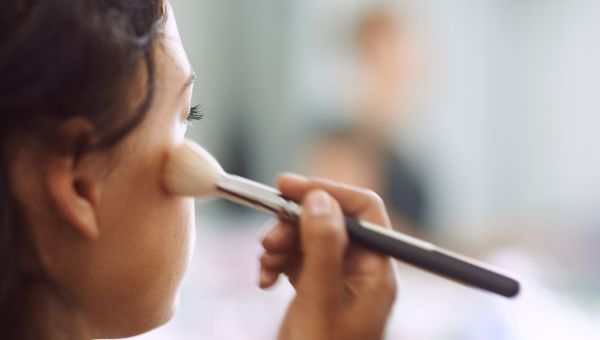
You misuse makeup
Your pores open up when you sweat, leaving them susceptible to dirt, oil, and makeup. Layering on powder or foundation in the summer heat can promote breakouts and blackheads. If you're prone to acne, "wearing makeup while you sweat can aggravate it," says Downie.
Rethink your summer routine. If… Show More
Your pores open up when you sweat, leaving them susceptible to dirt, oil, and makeup. Layering on powder or foundation in the summer heat can promote breakouts and blackheads. If you're prone to acne, "wearing makeup while you sweat can aggravate it," says Downie.
Rethink your summer routine. If you’re headed to the beach, skip the makeup and use sun protection instead. On non-beach days, keep makeup light. Stick with a noncomedogenic, tinted moisturizer with broad-spectrum sun protection, waterproof mascara, and a tinted SPF lip balm.
Show Less
American Academy of Dermatology Association. Sunscreen FAQs. Page last updated September 7, 2022.
Lyons AB, Trullas C, Kohli I, et al. Photoprotection beyond ultraviolet radiation: A review of tinted sunscreens. J Am Acad Dermatol. 2021;84(5):1393-1397.
The Skin Cancer Foundation. Sunburn and Your Skin. Page last reviewed May 2021.
United States Environmental Protection Agency. Ultraviolet (UV) Radiation and Sun Exposure. Page last updated July 14, 2022.
Venosa, Ali. 5 Sneaky Ways You’re Being Exposed to the Sun’s UV Rays. The Skin Cancer Foundation. June 21, 2022.
U.S. Food & Drug Administration. Sunscreen: How to Help Protect Your Skin from the Sun. Page last reviewed December 16, 2022.
Cleveland Clinic. Actinic Cheilitis. Page last reviewed May 13, 2022.
The Skin Cancer Foundation. You Missed a Spot! Lower Your Skin Cancer Risk by Protecting These Often-Missed Areas. August 24, 2018.
Centers for Disease Control and Prevention. Mosquito Bite Symptoms and Treatments. Page last reviewed March 6, 2020.
Sánchez M, González-Burgos E, Iglesias I, et al. Pharmacological Update Properties of Aloe Vera and its Major Active Constituents. Molecules. 2020;25(6):1324.
Johns Hopkins Medicine. The Danger of Insect Stings. Accessed on February 2, 2023.
Mayo Clinic. Bee Sting. Page last reviewed August 18, 2022.
American Academy of Dermatology Association. How to Care for Dry, Cracked Heels. Page last updated January 31, 2022.
U.S. Food & Drug Administration. Should You Put Sunscreen on Infants? Not Usually. Page last reviewed August 24, 2021.
American Academy of Dermatology Association. 12 Summer Skin Problems You Can Prevent. Accessed on February 2, 2023.
More On


video
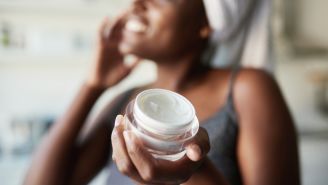
article

slideshow


video


video
